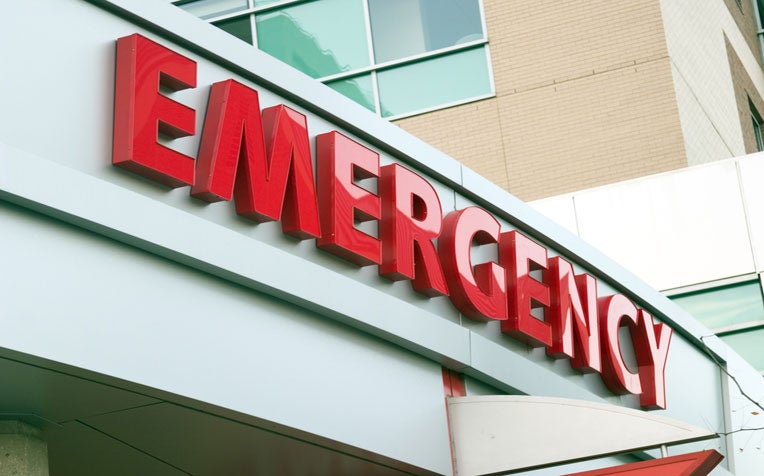HealthXchange will NEVER ask you to transfer money over a call. If in doubt, call the 24/7 ScamShield helpline at 1799, or visit the ScamShield website at www.scamshield.gov.sg.
Non-English translations are machine-generated; verify independently for
potential
inaccuracies.
Let us help you find what you're looking for.
Popular Searches
Accident and Emergency: When Is It Necessary?

The A&E department give treatments to patients with critical conditions.
When
do you need to visit the A&E?
Fever
Treat at home
- By taking medicine like paracetamol to lower the fever.
See a GP
- If the fever persists for a few days even after medicine is taken.
Rush to A&E
- If the fever persists for several days and the person also has a rash, as this can mean his blood platelet count is low.
- If the person has endstage renal failure and is on dialysis, or has just completed chemotherapy or radiotherapy for cancer. These patients have very low immunity and their conditions can deteriorate quckly if they have an infection. Doctors must administer antibiotics quickly.
Cuts
Treat at home
- By cleaning the wound as quickly as possible with water to minimise contamination. A sterile plaster or dressing can be used to cover the wound.
See a GP
- To have a deep wound stitched up. A tetanus injection and/or antibiotics may be given to avoid infection.
Rush to A&E
- If the wound is deep and open, and bleeding doesn't stop. This may mean that an artery is affected, and emergency care is necessary.
- If the pain is severe and/or the area around the cut feels numb, as this may mean that a nerve is affected or damaged.
- If the cut involves broken glass. An x-ray will show if glass fragments have entered the wound, which will have to be removed.
- If the cut is severe, it will have to be cleaned and stitched, and antibiotics given to avoid infection.
Nosebleeds
Treat at home
- By applying ice over the forehead, sucking on ice chips, and pinching the soft part of the nose for 10 minutes. Rubbing, picking or blowing the nose very hard can cause the nose to bleed further. Tilting the head backwards does not stop a nosebleed. Doing so actually makes the blood flow backwards and back into the nose.
Rush to A&E
- If the bleeding does not stop or if nose pinching stops it only momentarily. At the A&E, a procedure known as cautery may be used to stop it. Most nosebleeds are not emergencies and for cases deemed to be simple, A&E treatment is likely to be what can be done at home: putting an ice pack on the nose, sucking on ice chips, and pinching the nose hard.
- If the person has high blood pressure or heart failure, or is on blood thinners such as warfarin or aspirin, as bleeding can be more serious, heavier or prolonged.
- If the person is elderly, because of the association of nose cancer with nosebleeds in this age group.
- If the person has cancer and is undergoing chemo or radiotherapy. Such treatment can cause the nose lining to become raw and prone to bleeding.
Elevated blood pressure, dizziness, breathlessness and other sudden symptoms
Treat at home
- If a hypertensive person’s blood pressure is higher than normal (say, 160 instead of the usual 140) but he feels completely well otherwise.
See a GP
- If the blood pressure remains high for several days.
Rush to A&E
- If the person suffering from hypertension suddenly becomes incapacitated by severe dizziness.
- If the person with hypertension experiences chest pains, breathlessness, headache, blurred vision, vomiting, or weakness in an arm and leg, as these can suggest something more serious, such as a stroke.
Ref: R14
Contributed by
Related Articles
Public Events
06 Jan 2026
Talks
Health Talk: Healthy Beverages @ SHP-Outram
Free, no registration required. Please walk in to clinic at specified date and time.
Learn More
06 Jan 2026
Lectures
Unconventional Secretion: Extracellular Vesicles, RNA and Alpha-synuclein
On-site
•
Free
Learn More
07 Jan 2026
Seminars
The Journey of Medical Device Development From Idea to Commercial Impact
On-site
•
Free
Learn More
07 Jan - 26 Feb 2026
Programmes
KKH Antenatal Programme
1-Day Intensive Course KKH Patient: $306 Non-KKH Patient: $326; 4-Week Course KKH Patient: $240 Non-KKH Patient: $296
Learn More
Get the Health Buddy App
© 2025 SingHealth Group. All Rights Reserved.















 Get it on Google Play
Get it on Google Play